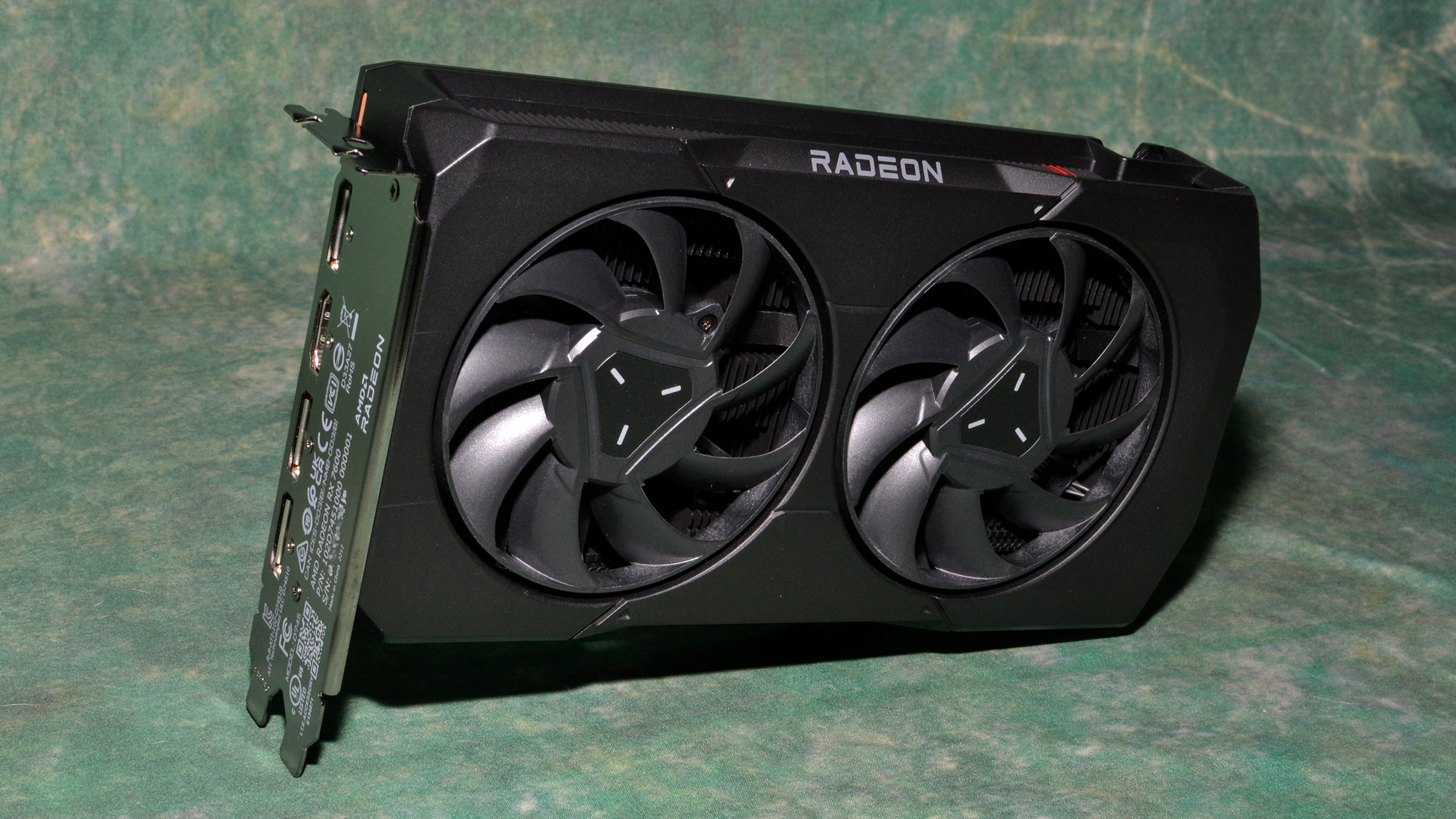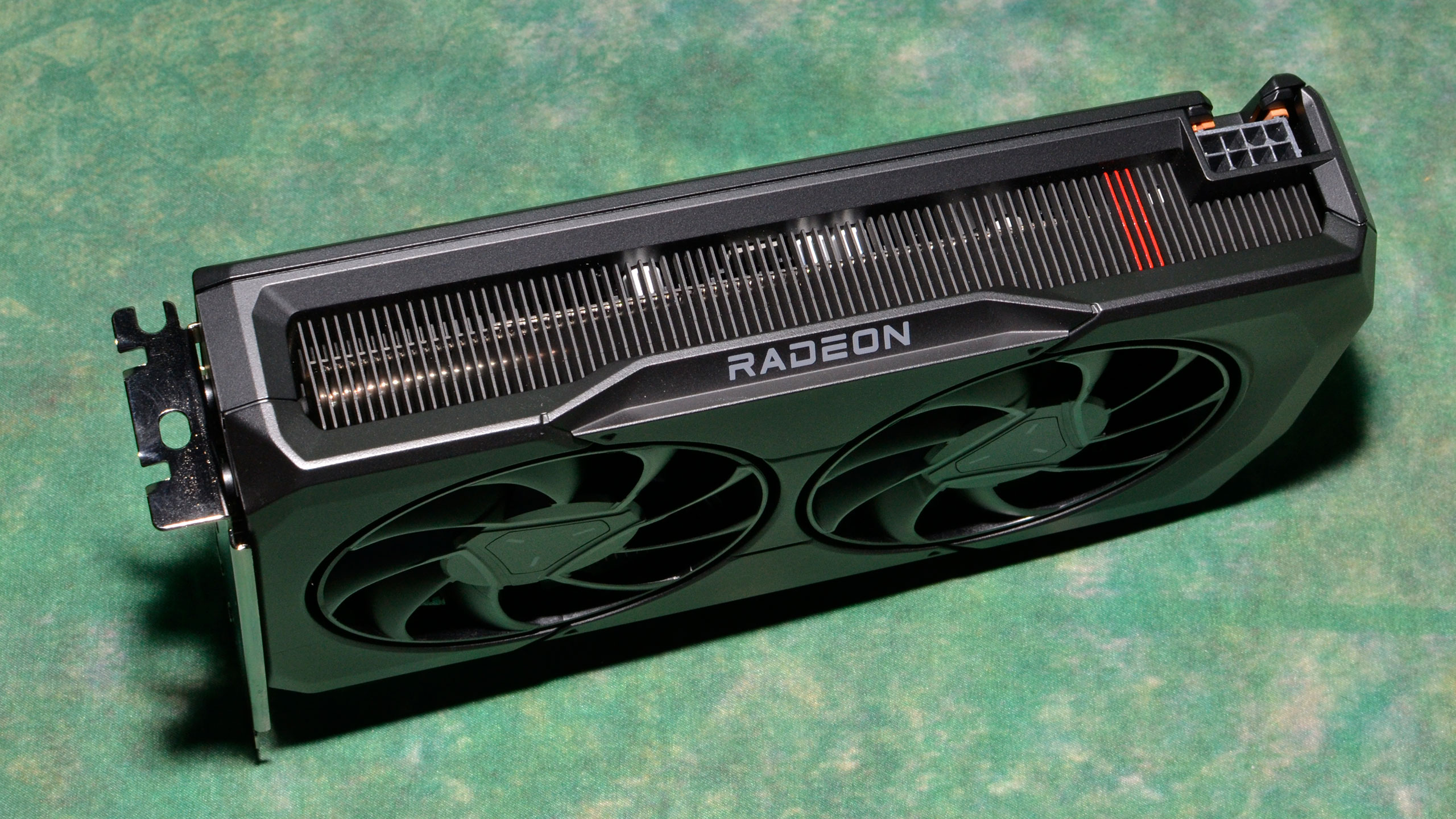Why you can trust Tom's Hardware
We've been working on this for a while, retesting all the GPUs on our new test PC using an Nvidia PCAT v2 device, and we're finally making the switch from the Powenetics hardware and software we've previously used. The benefit is that we're now using data from our full gaming suite, rather than just a couple of specific tests. The charts are the geometric mean across all 15 games, though we'll also have full tables showing the individual results — some games are more taxing than others, as you'd expect.
Our new testing approach also provides data on GPU clock speeds and temperatures (but not fan speeds), and we'll have separate charts for 1080p ultra, 1080p medium, and 1440p ultra. Besides the power testing, we also check noise levels using an SPL meter. This is done at a distance of 10cm from in order to minimize noise pollution from other sources (like the CPU cooler).
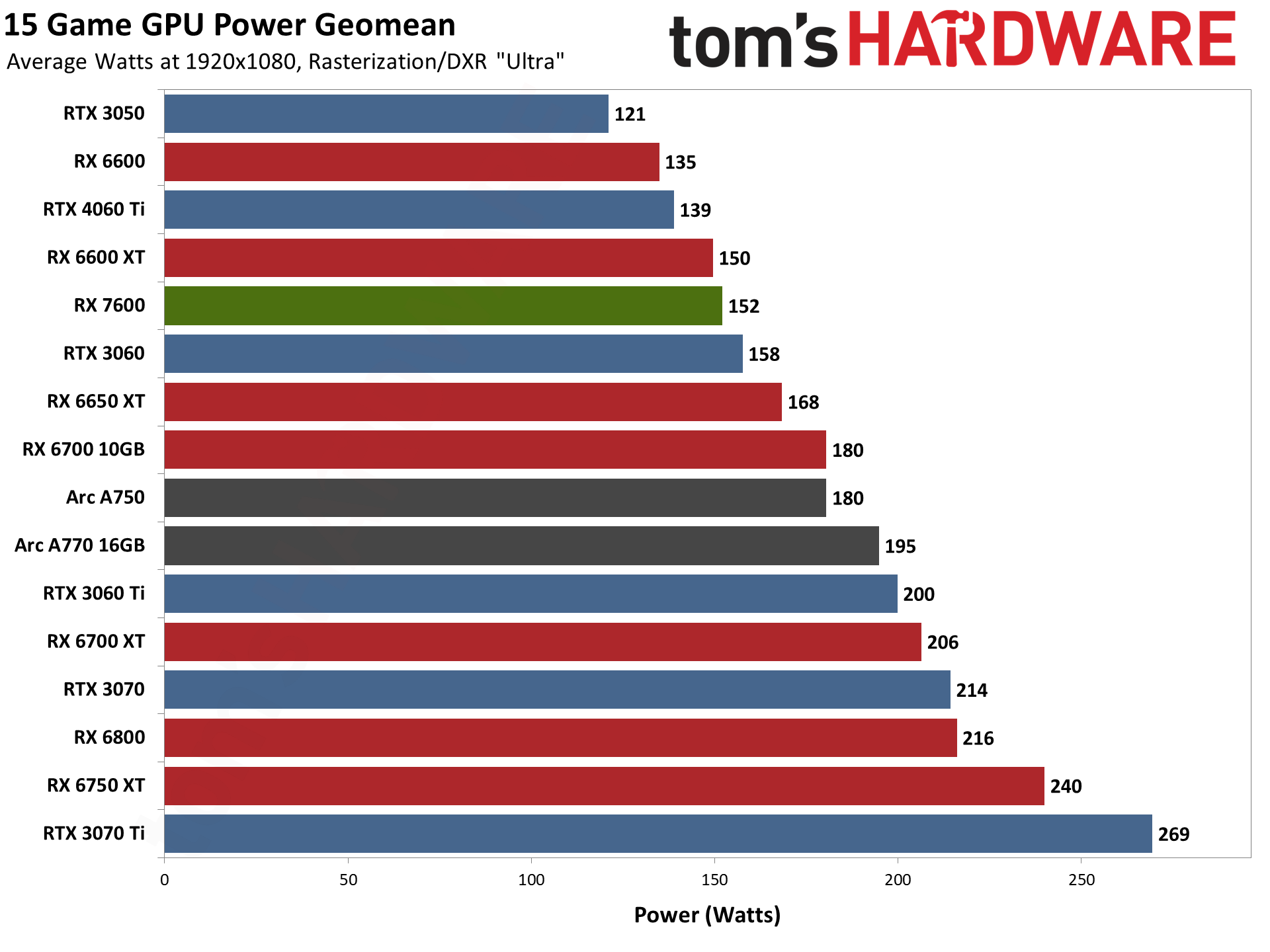
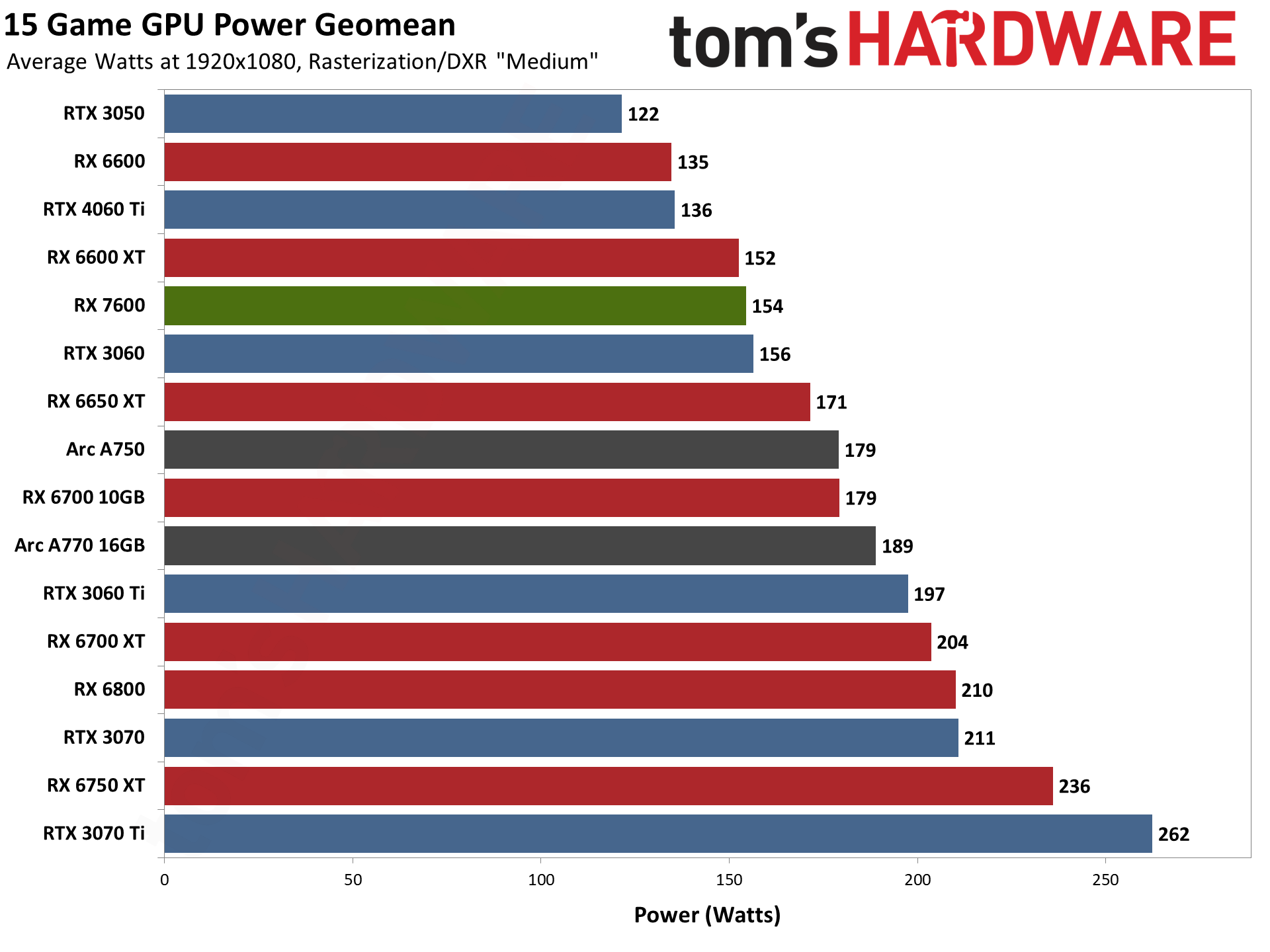
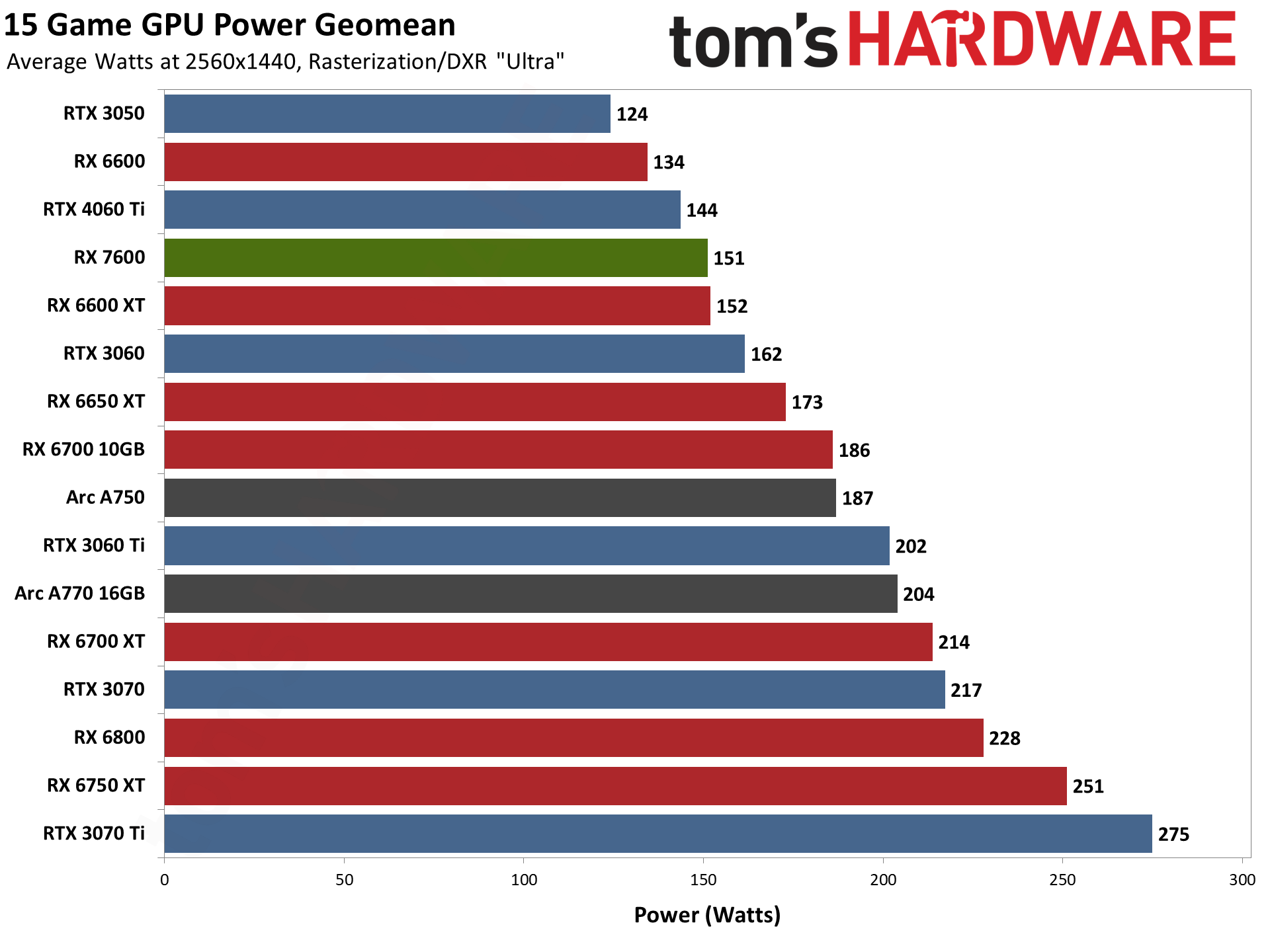
AMD's official TBP (total board power) for the RX 7600 is 165W, and as you can see, on average it's about 10–15 watts below that mark. Of course, being an average that means there are games where it can slightly exceed the official TBP, and other games where it's well below the limit.
While they're not direct competitors, it's interesting to note that Nvidia's RTX 4060 TI actually uses less power than the RX 7600 while delivering better performance. That's proof again of just how efficient Nvidia's Ada Lovelace architecture can be, though TSMC's 4N node certainly deserves a chunk of the credit. RX 7600 uses the prior generation TSMC N6, which is still better than the N7 node on RX 6000-series GPUs and the RTX 30-series Samsung 8N node.
It's worth pointing out that the RX 6650 XT ends up using about 15–20 watts more power than the RX 7600. Even if performance hasn't changed much, it does show that the Navi 33 GPU is about 15% more efficient than Navi 23. Full details of the power use in the individual games can be found in the gallery further down the page, along with information on FPS/W (i.e. efficiency).
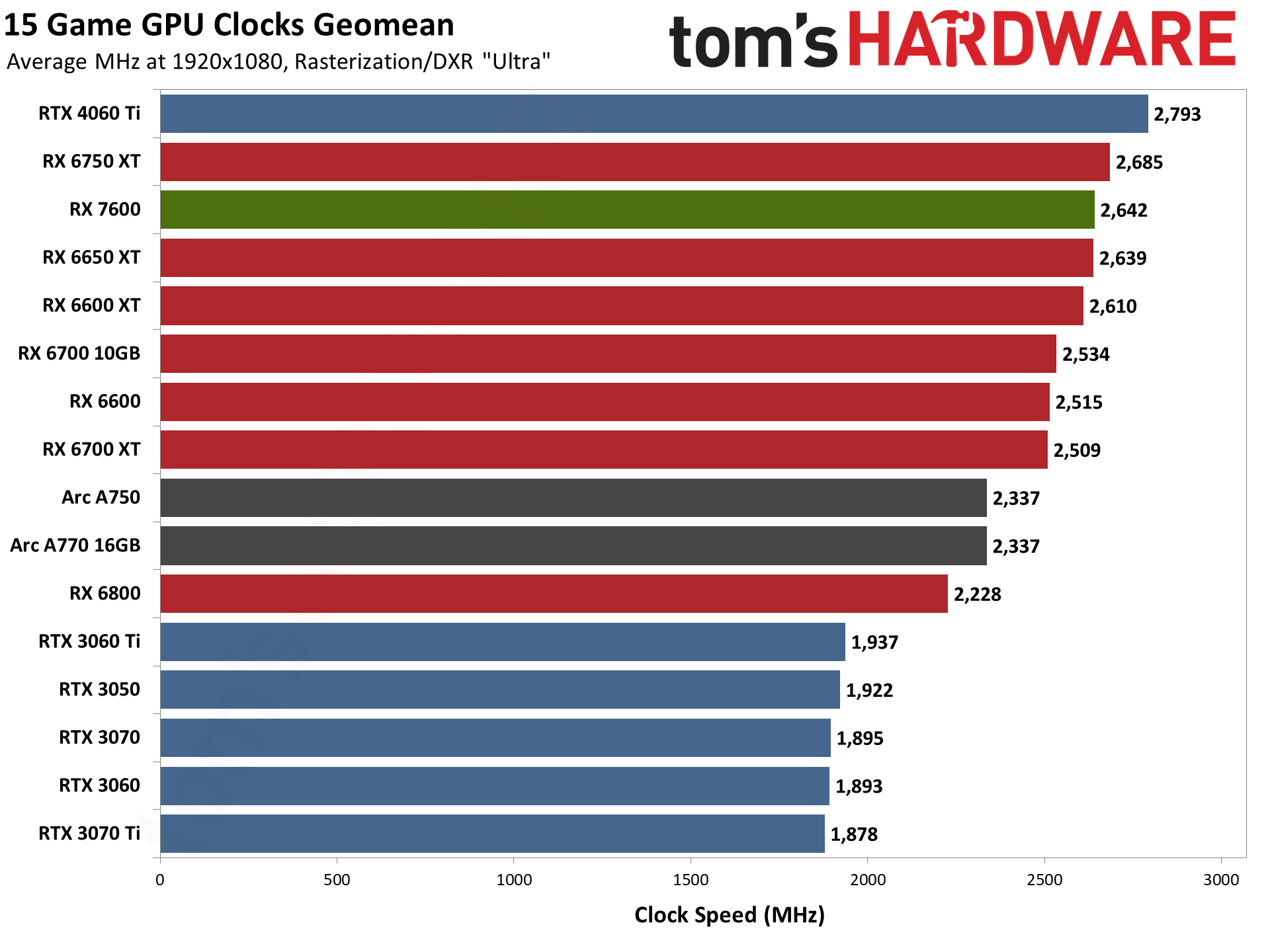
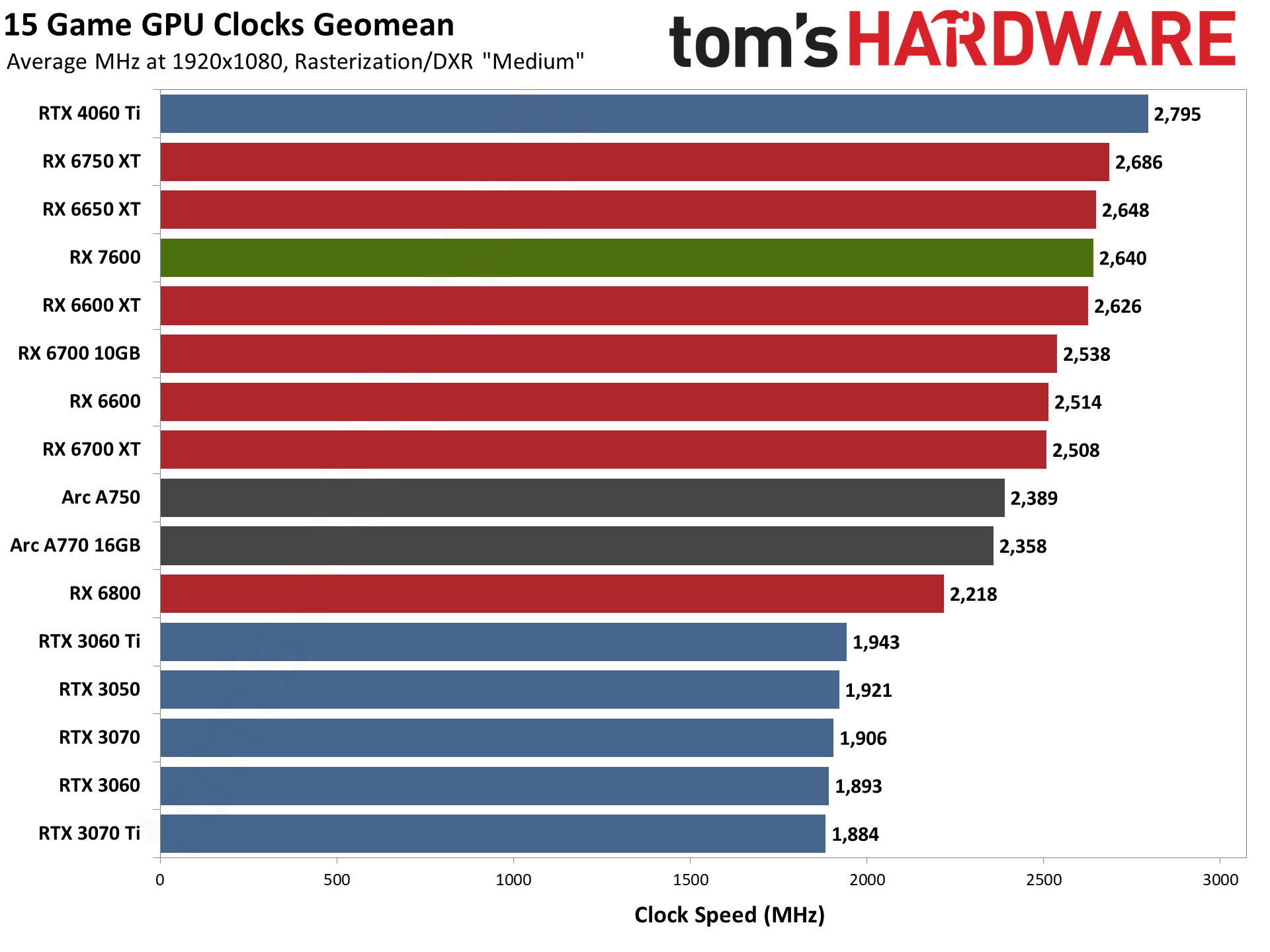
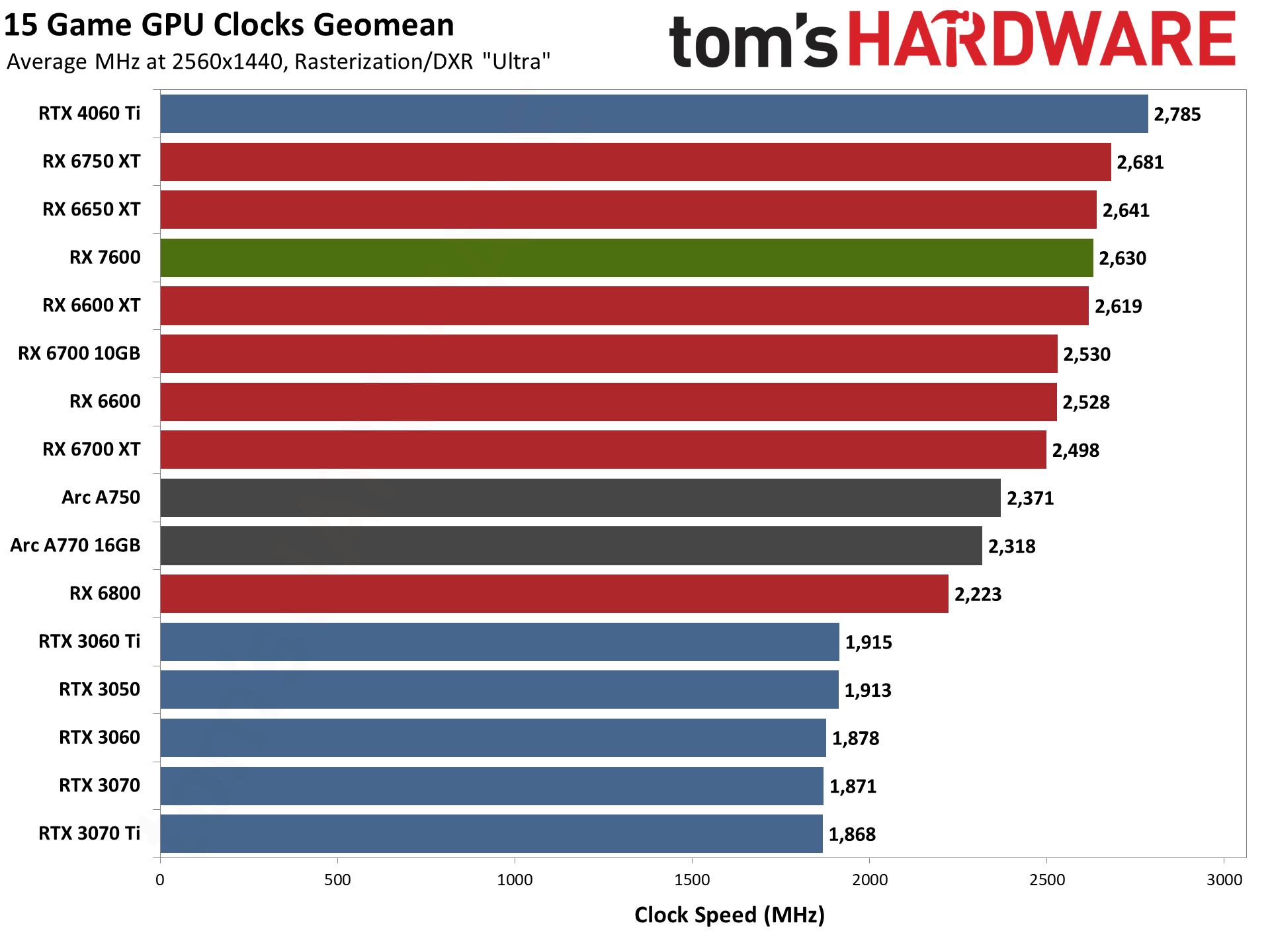
AMD helped usher in a new era in GPU clocks with RDNA 2, and Nvidia has joined the party with the RTX 40-series. Previous generation GPUs were only likely to break the 2GHz barrier with extreme overclocking, but now everything passes that mark with ease.
AMD lists a "Game Clock" of 2250 MHz for the RX 7600, with a boost clock of 2625 MHz. The game clock is obviously very conservative, with every game in our test suite averaging at least 2480 MHz. There are even a few games, like Spider-Man, where the RX 7600 averaged around 2.85 GHz.
Comparing the RX 7600 and RX 6650 XT, there's almost no difference in GPU clocks, and both have 18Gbps GDDR6 memory. Perhaps future games will be better optimized for the RDNA 3 architecture, but right now it seems as though the enhancements don't make more than a few percent difference.

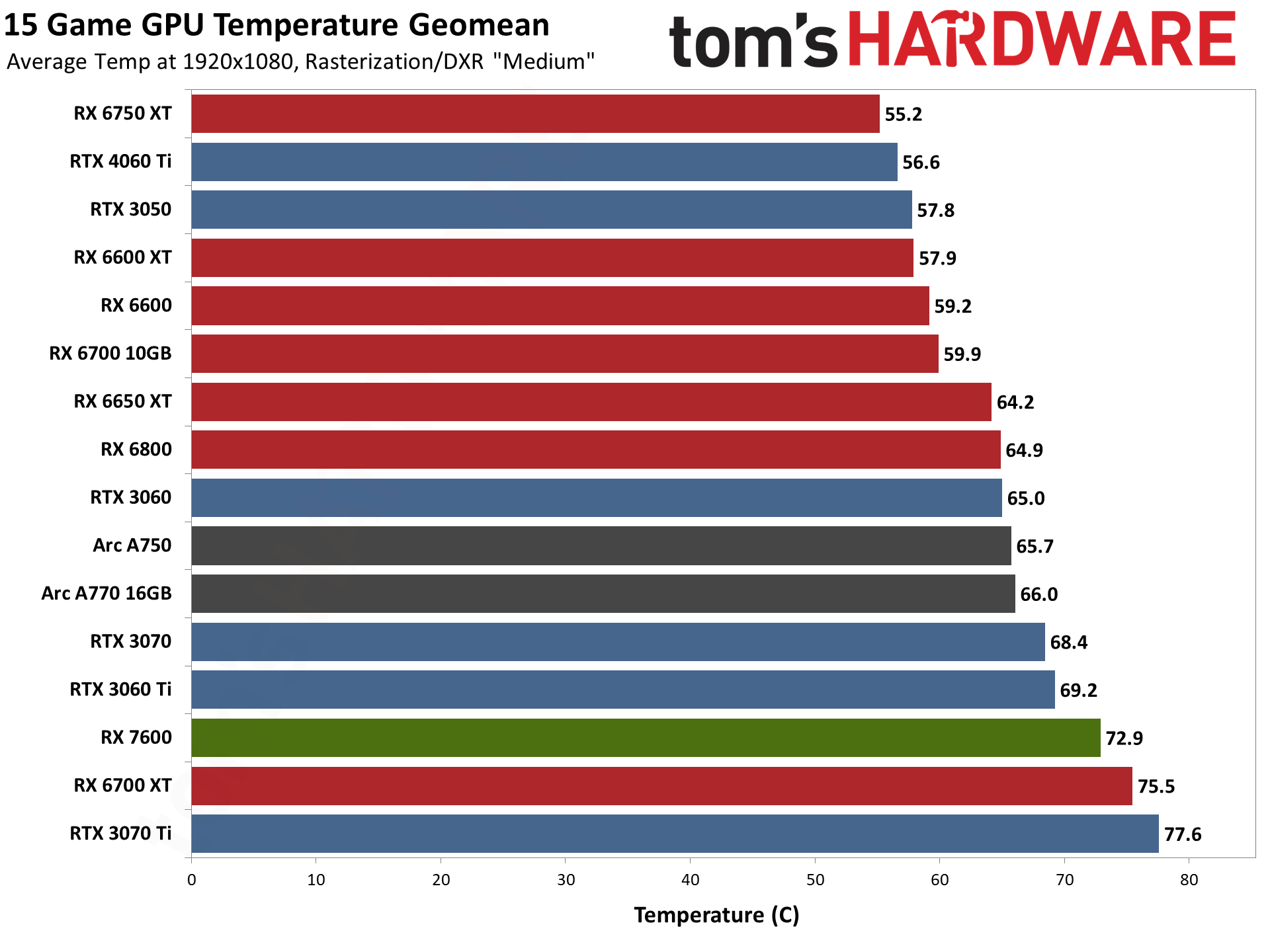

Last we have GPU temperatures, and it's worth pointing out that many graphics cards choose to prioritize lower noise over temperatures. The RX 7600 ranks near the bottom of the thermals charts, keeping company with the RX 6700 XT, but thermals on their own don't mean much.
Also remember that this is a compact GPU that could fit in a mini-ITX case quite easily. The RX 6600 XT, RX 6650 XT, and RX 6700 10GB by contrast are larger AIB designs, with a triple-fan cooler on the ASRock RX 6600 XT. The other two are more modest dual-fan designs at least, though they're still larger than AMD's RX 7600 reference design.
Let's finish up with a look at noise levels, as that will also help put the thermals into context.

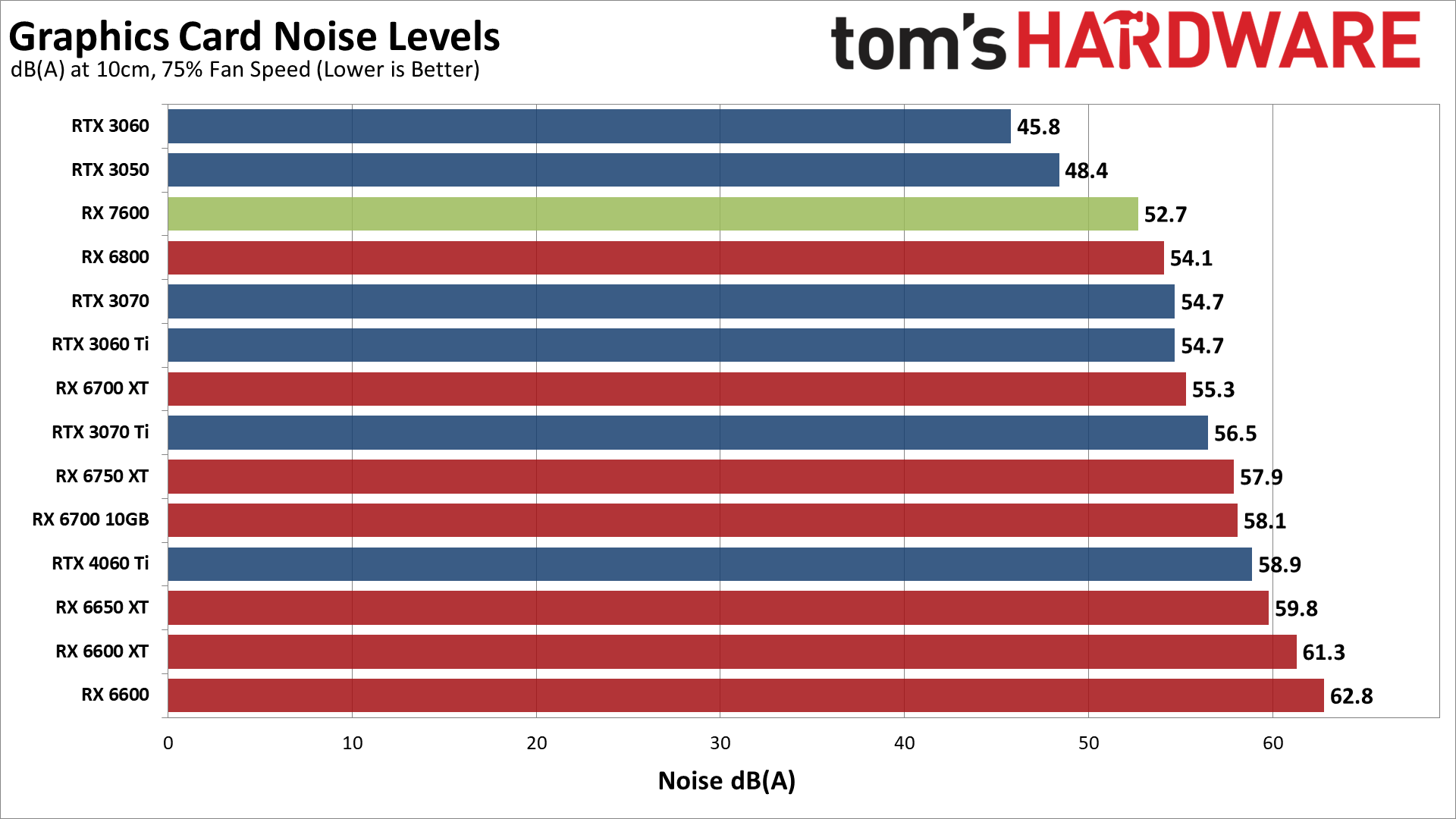
We check noise levels using an SPL (sound pressure level) meter placed 10cm from the card, with the mic aimed right at the center of one fan: the center fan if there are three fans, or the right fan for two fans. This helps minimize the impact of other noise sources like the fans on the CPU cooler. The noise floor of our test environment and equipment is around 31–32 dB(A).
After leaving Metro Exodus running for over 15 minutes, the AMD RX 7600 settled in at a fan speed of 56% and a noise level of 45.2 dB(A). That's not particularly quiet, especially for a GPU drawing around 150W. GPU temperatures were also 77C, so despite moderately high fan speeds and noise levels, AMD's reference cooler doesn't seem to be doing all that well.
This is in an open testbed as well. We can only imagine what would happen if you put the RX 7600 into a cramped mini-ITX build. It would probably run fine, but further restrictions to the airflow would cause the fans to have to spin even faster. That's not ideal for a card that otherwise looks like a great option for tiny PC builds.
We also tested with a static fan speed of 75%, and the RX 7600 registered 52.7 dB(A). There's still some headroom left for AMD to ramp up fan speeds, and you can use Radeon Settings to tweak the fan curve if you'd prefer a cooler running card. But for most people, the default fan curve should work fine.
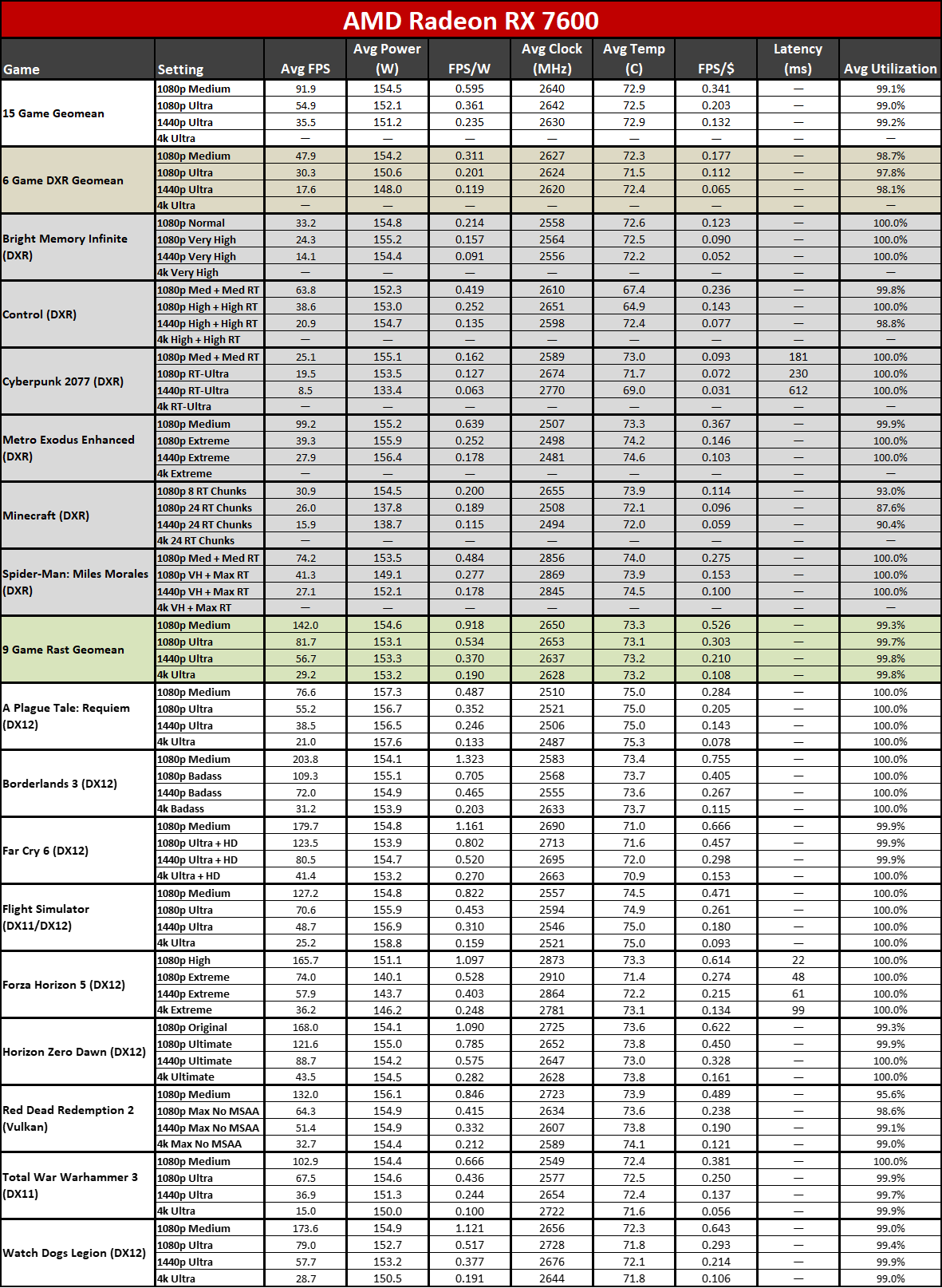
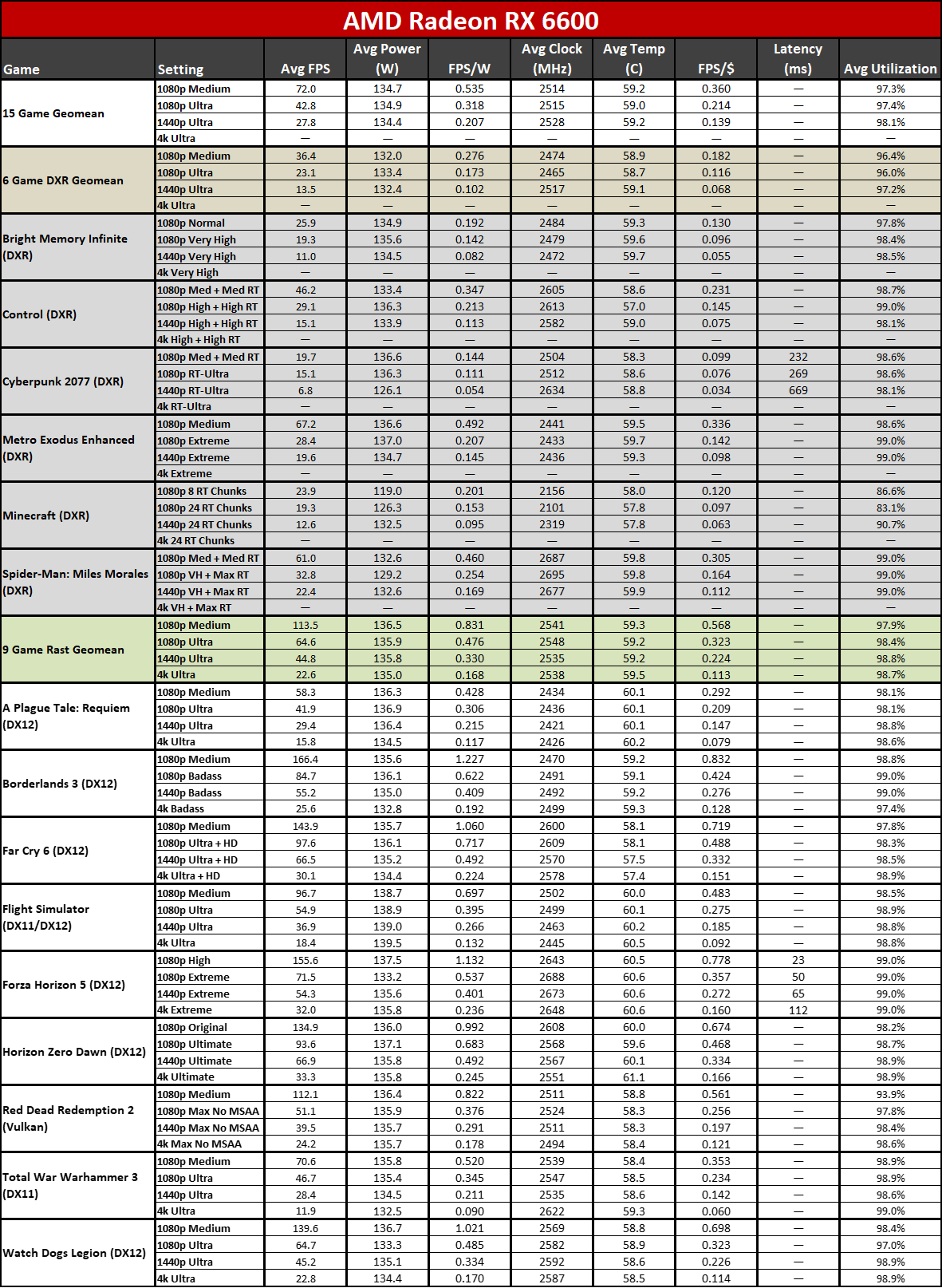
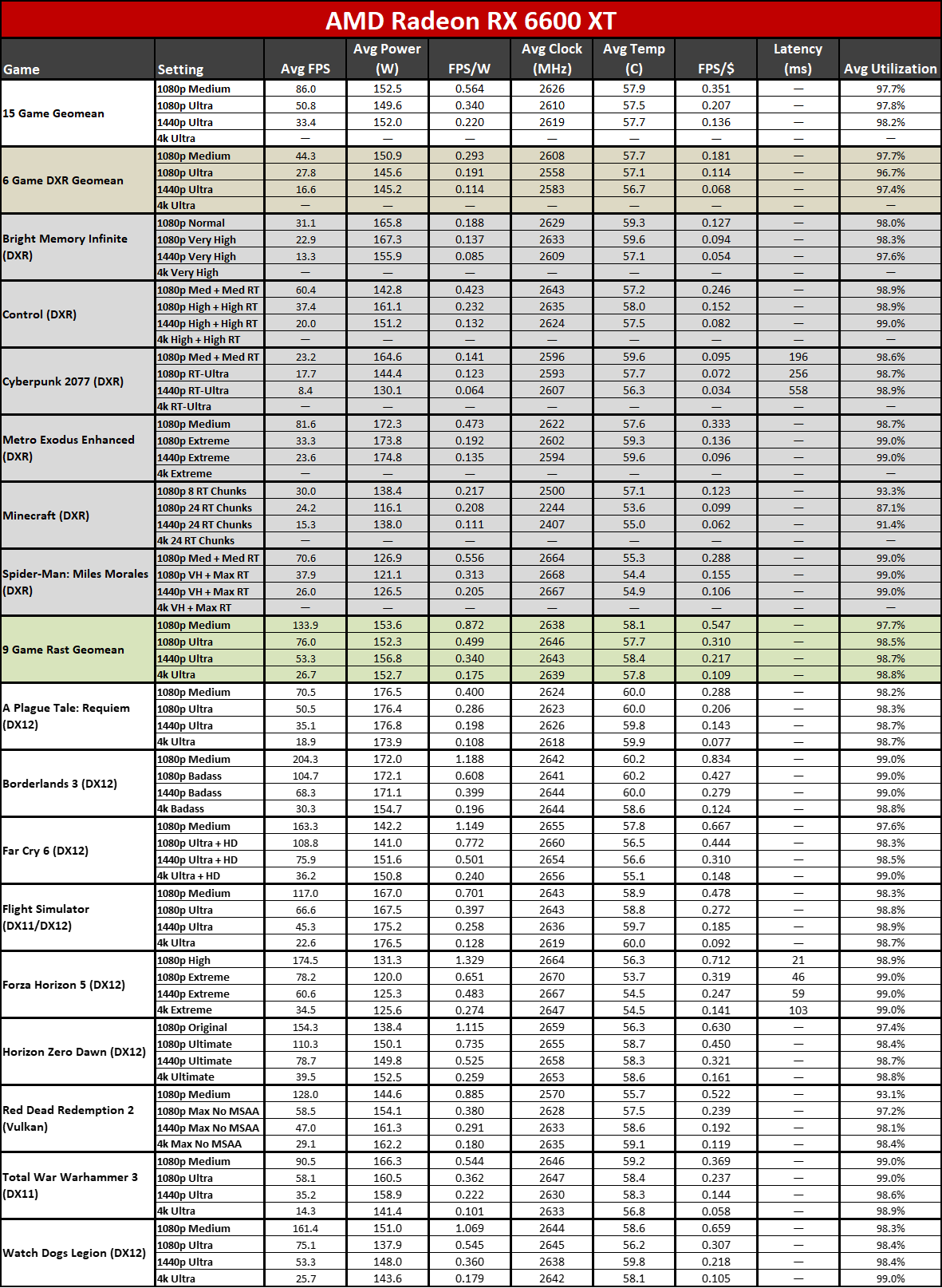
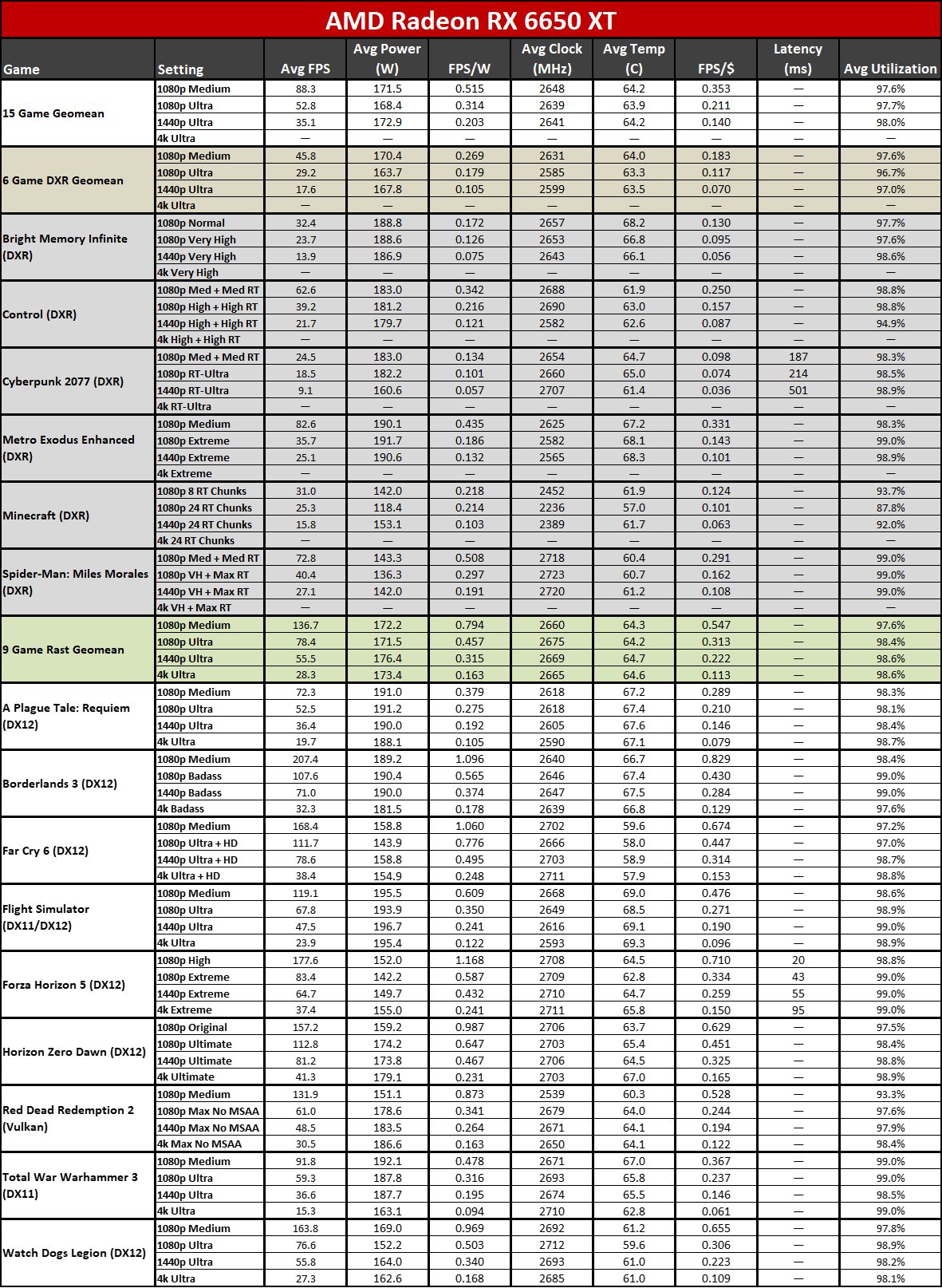
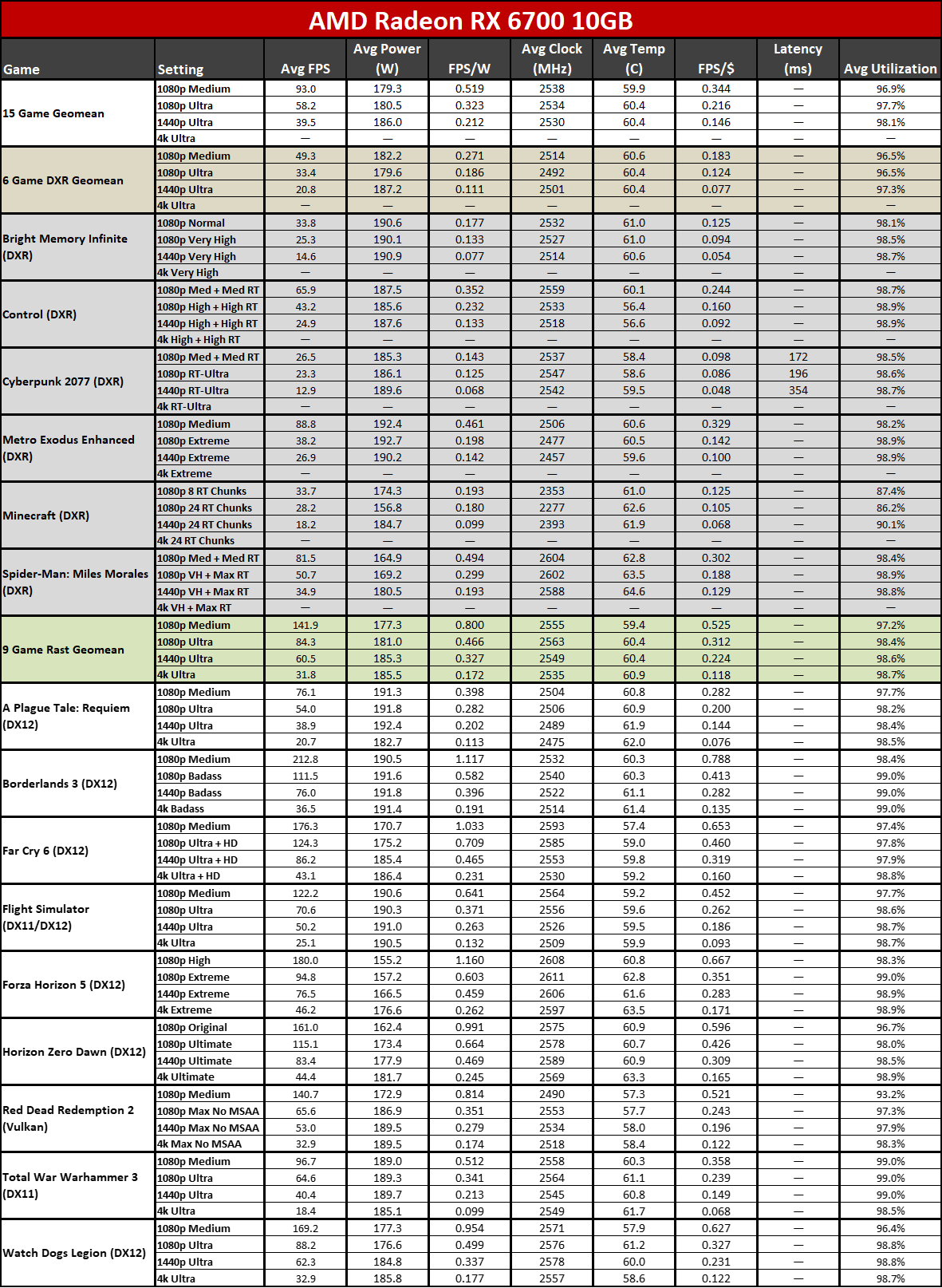
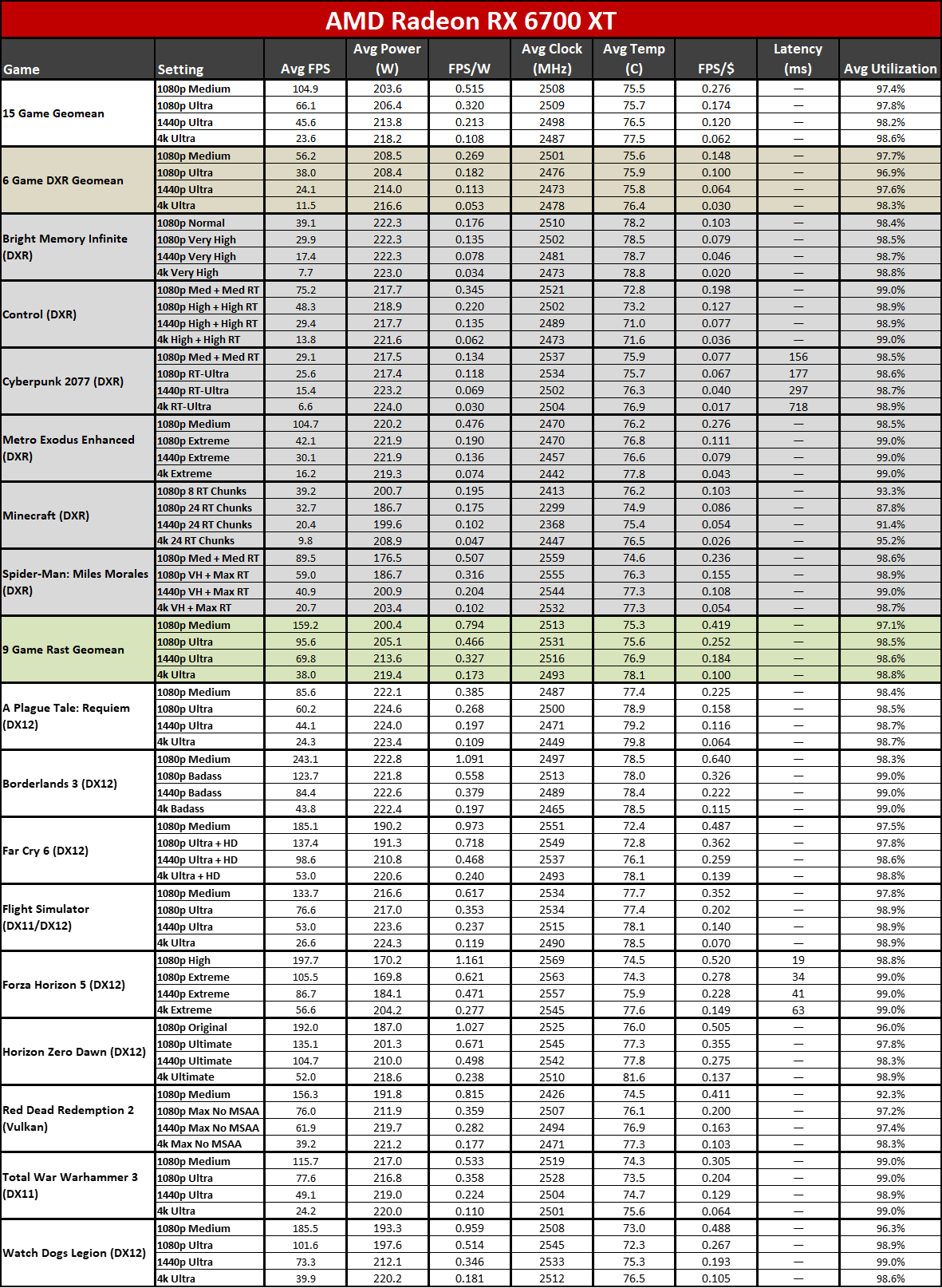
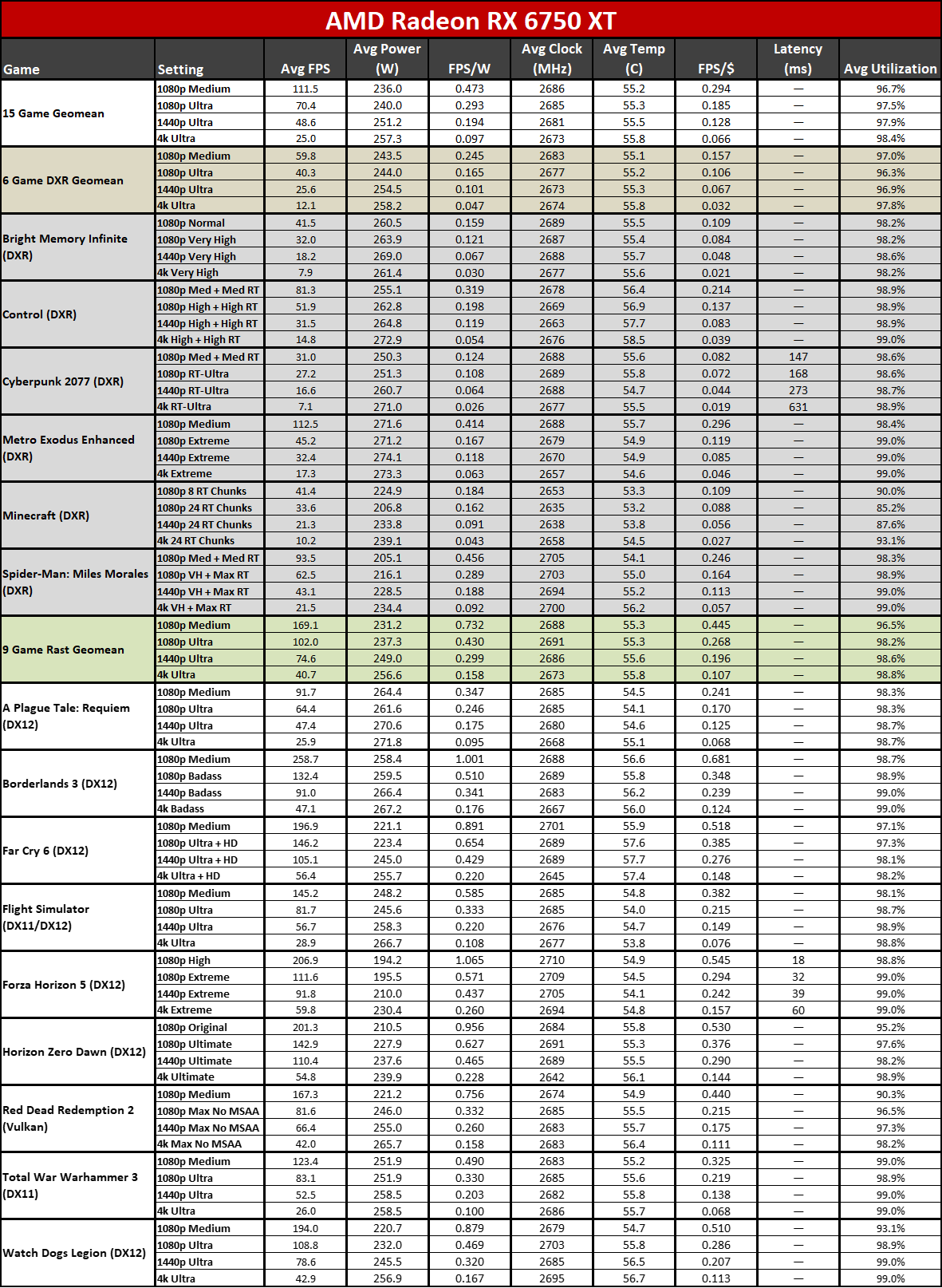
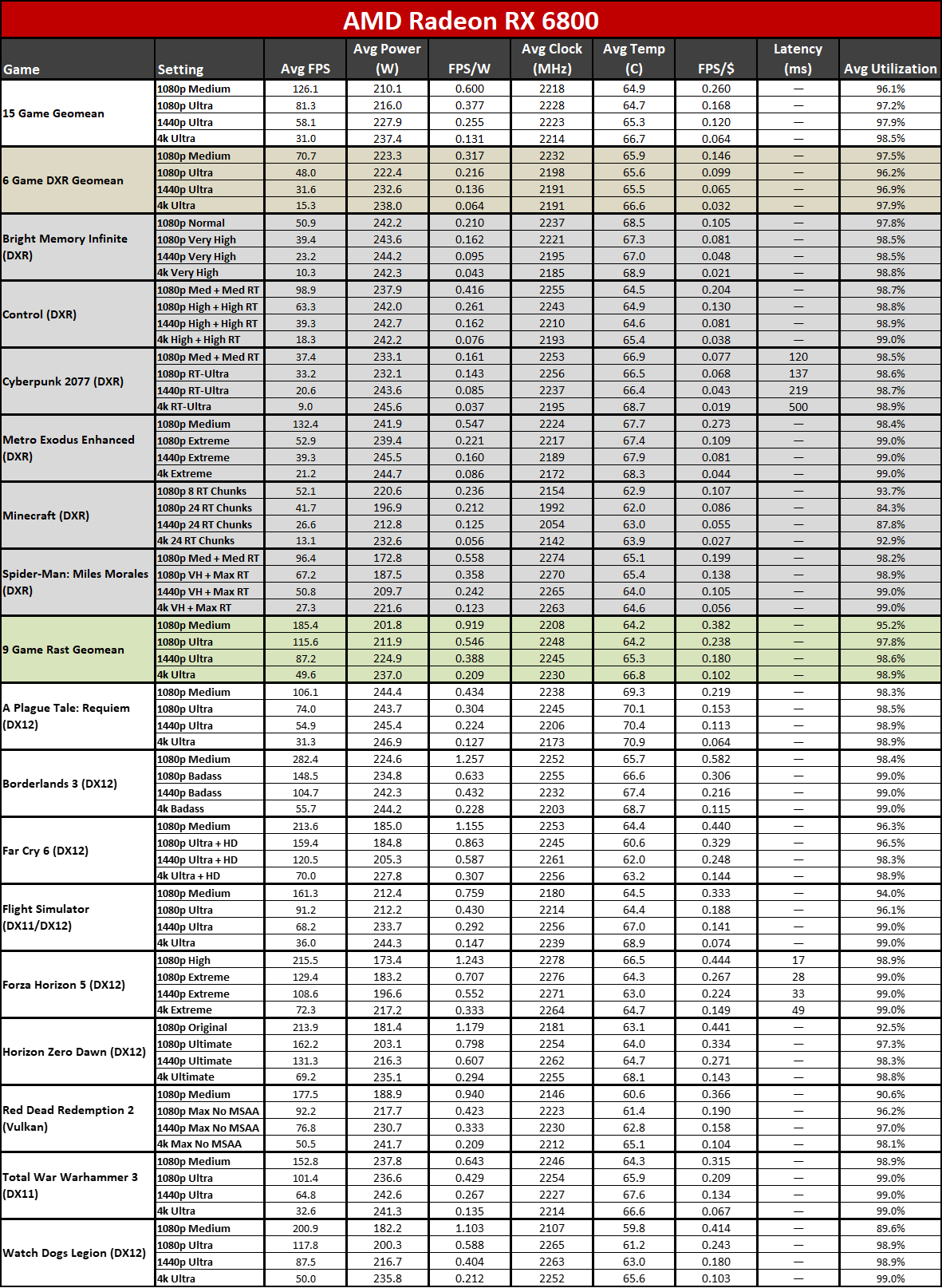
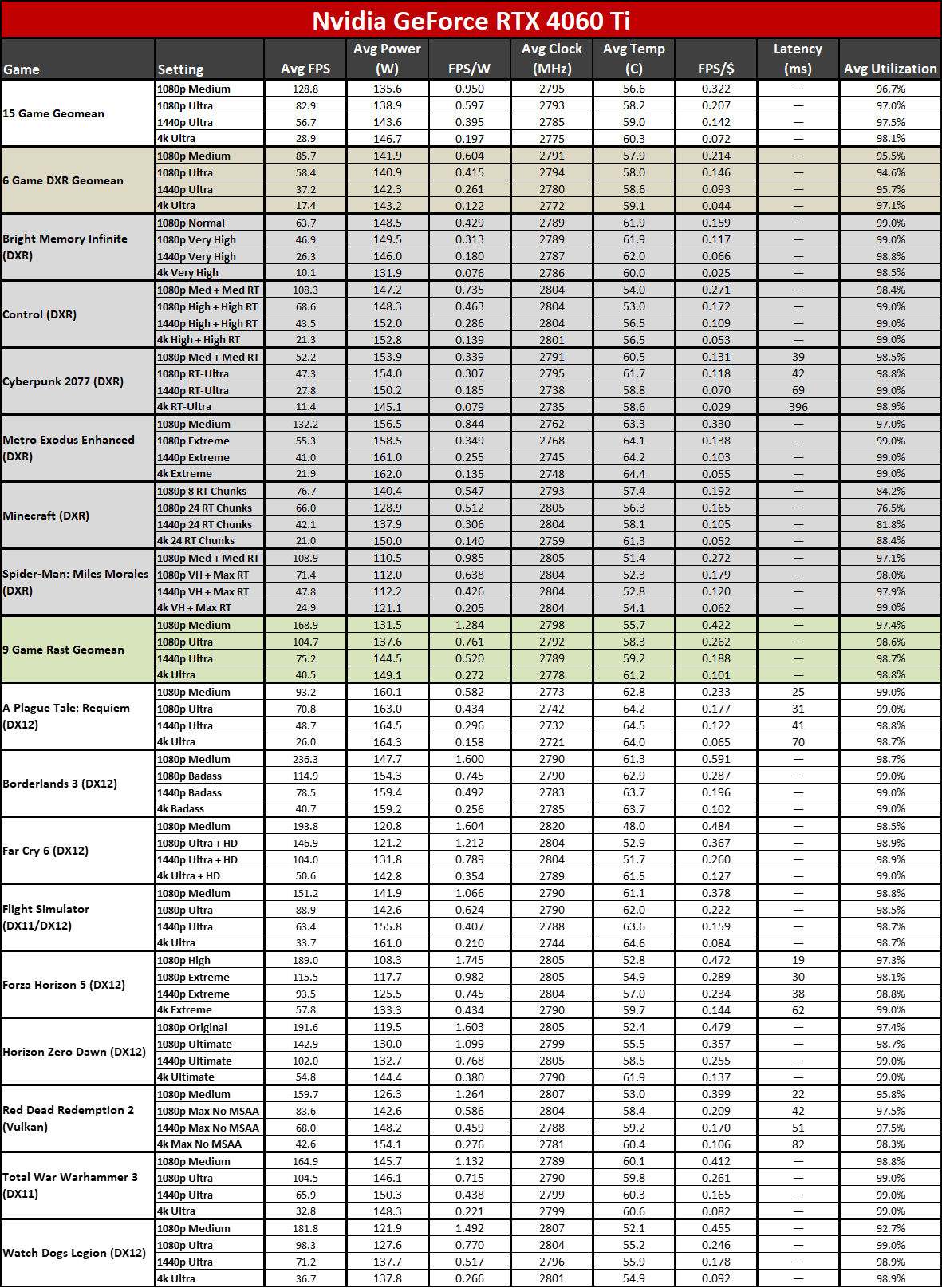
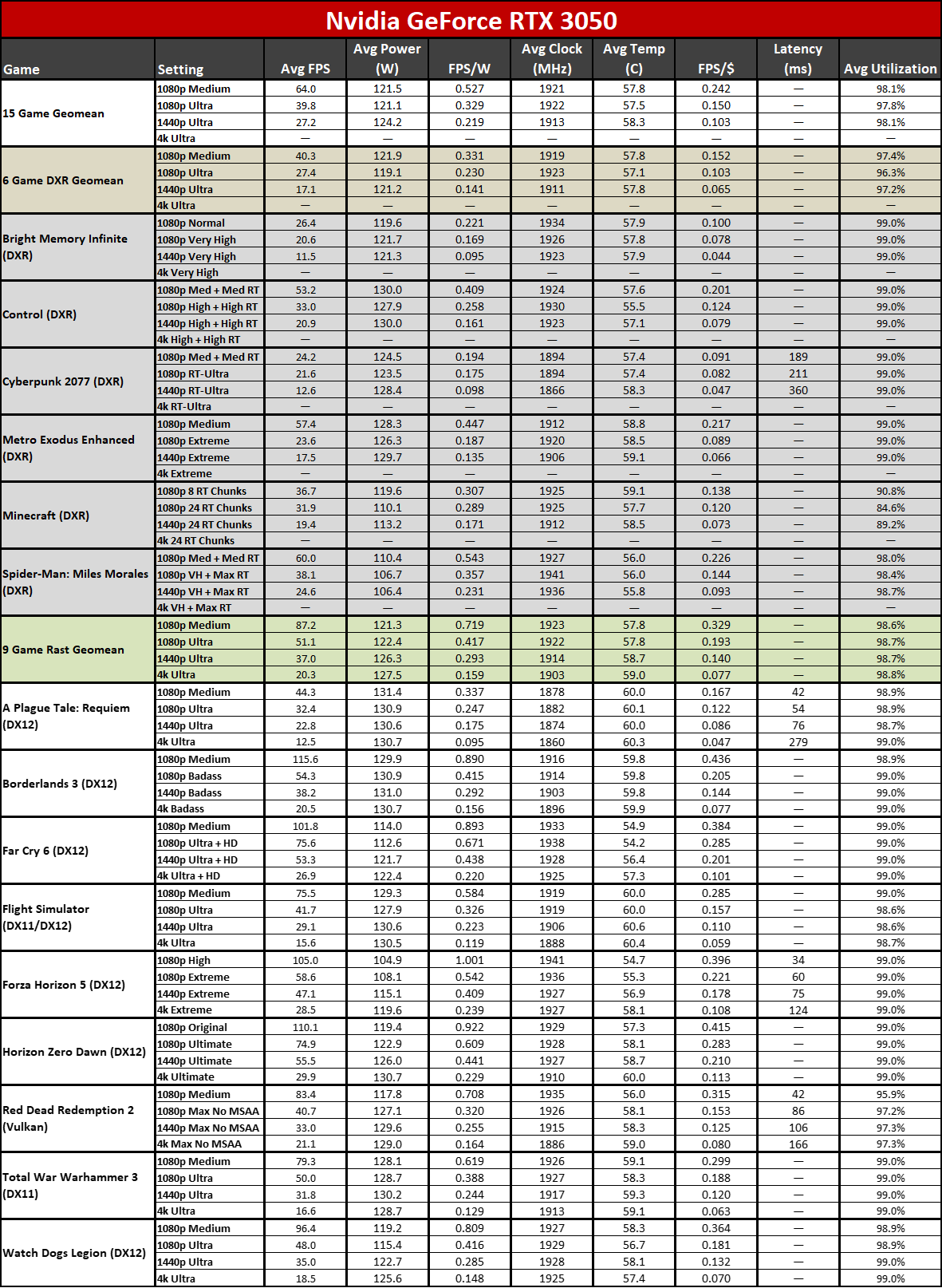
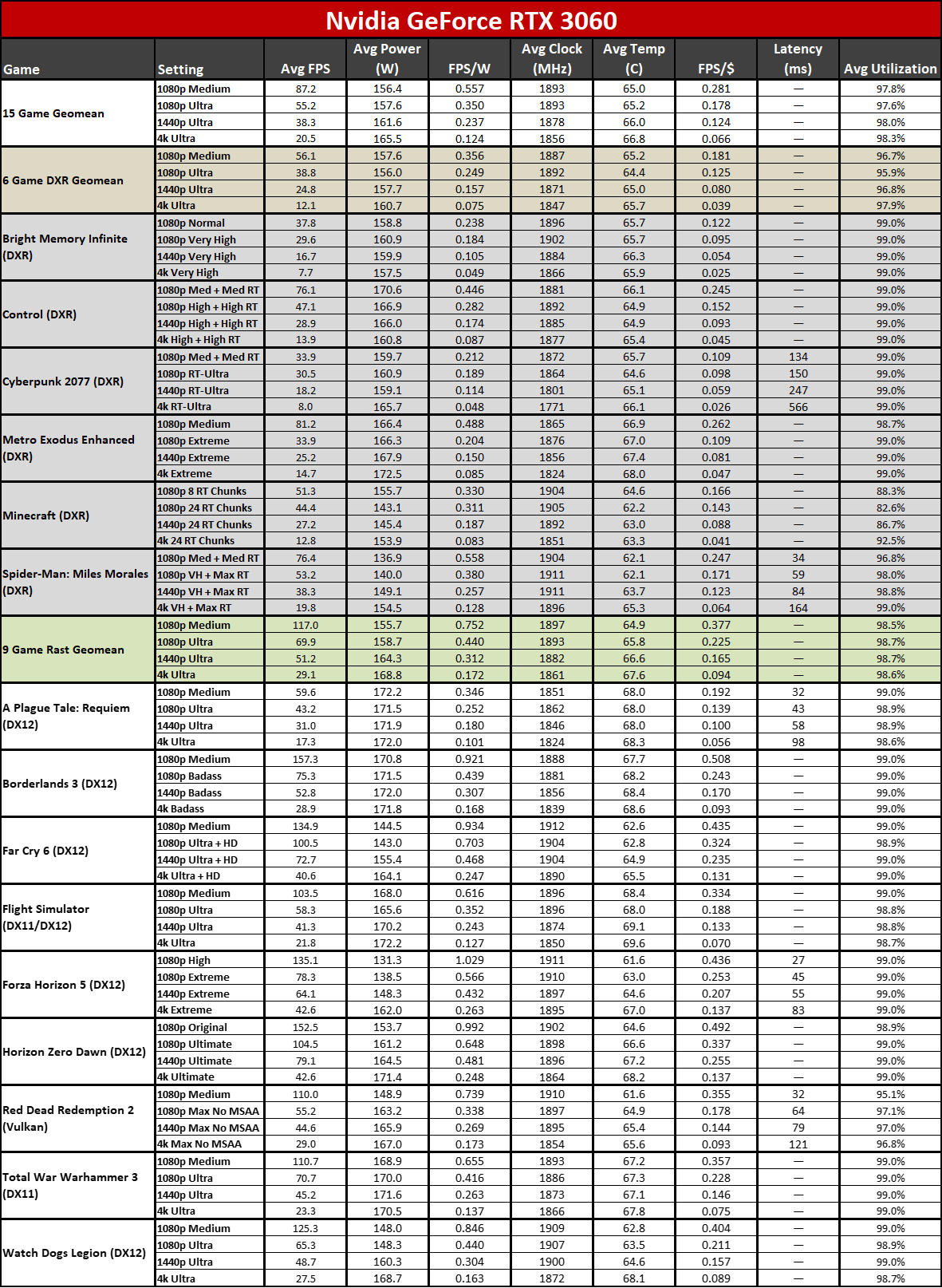
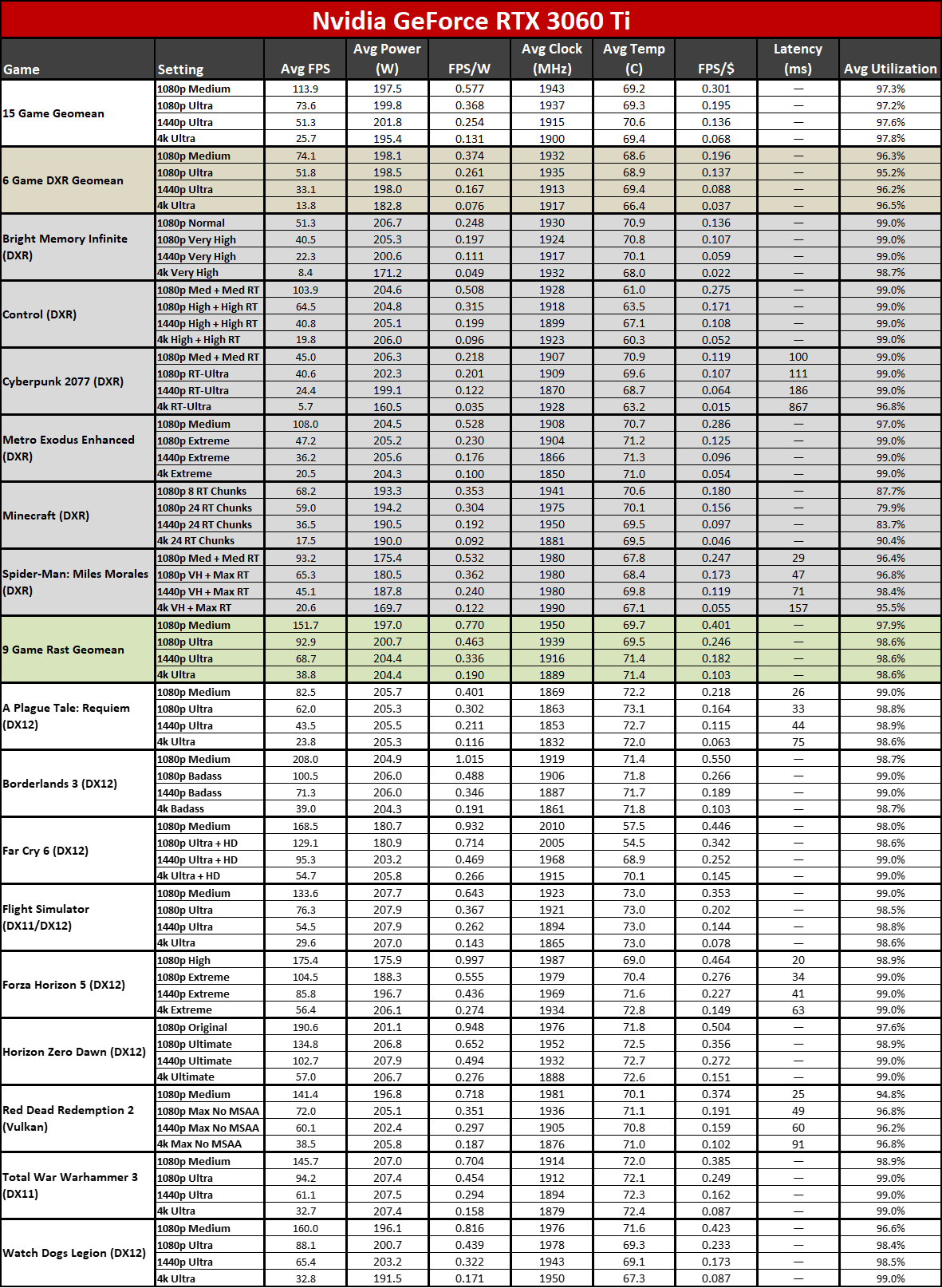
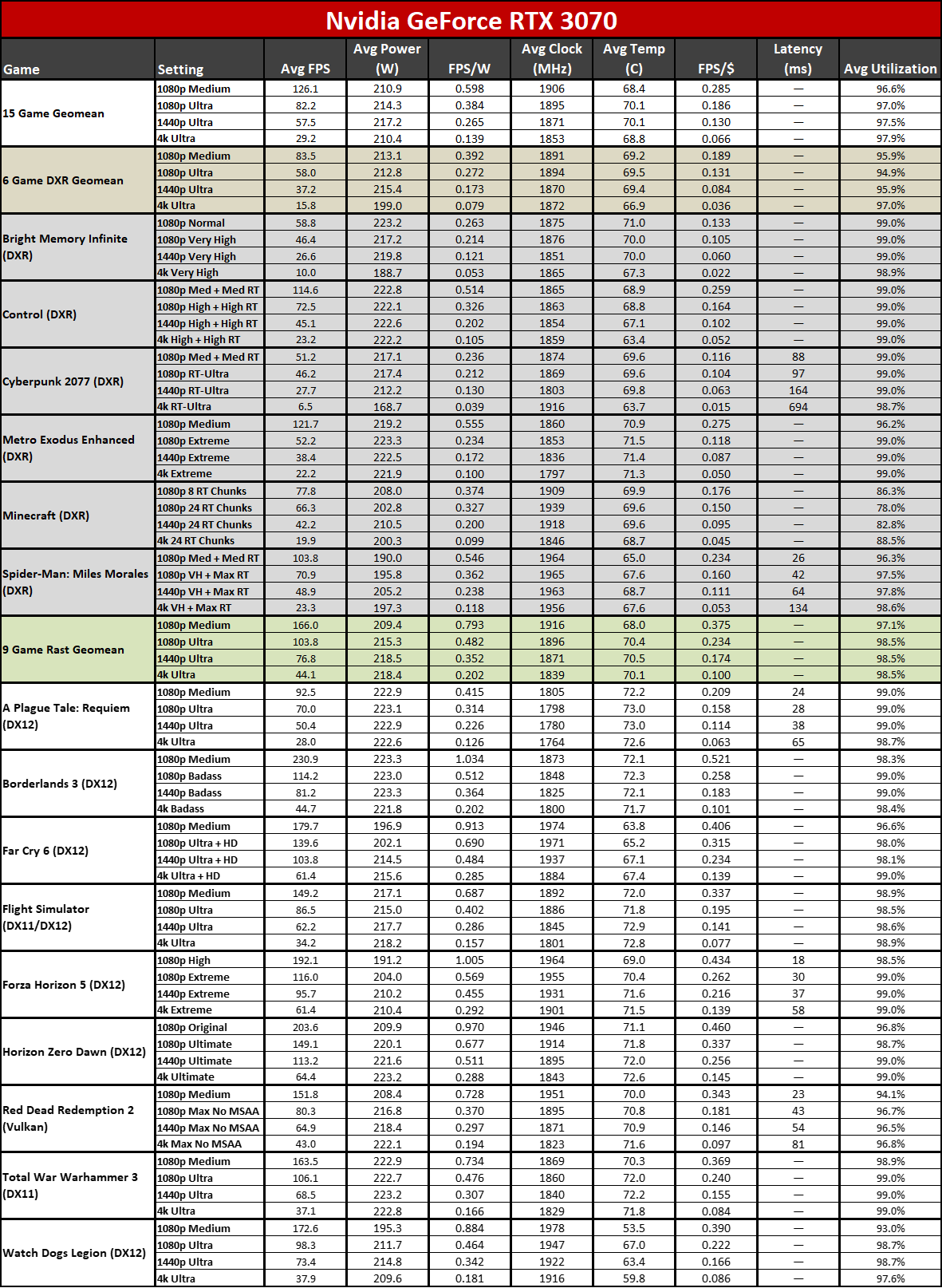
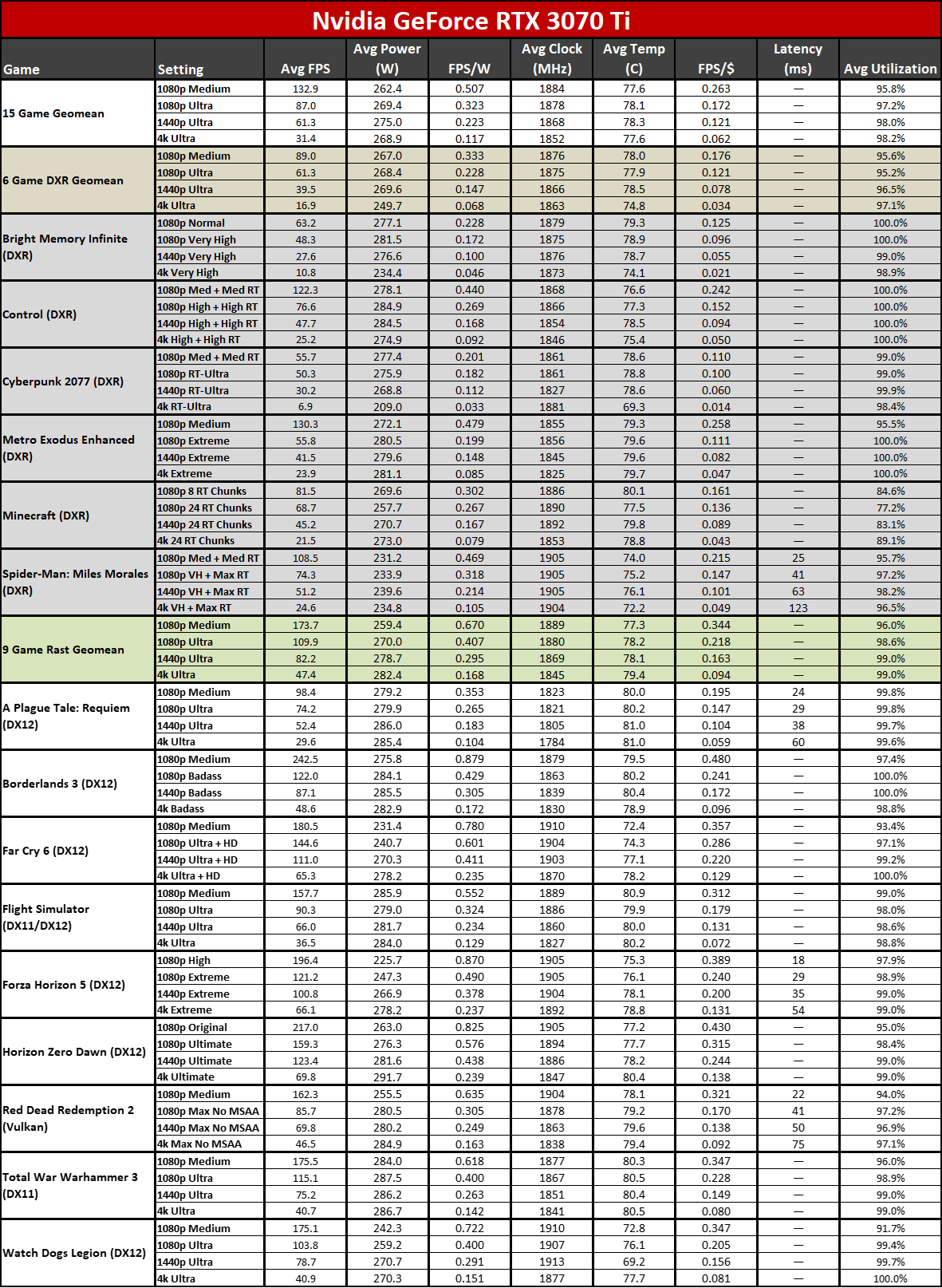
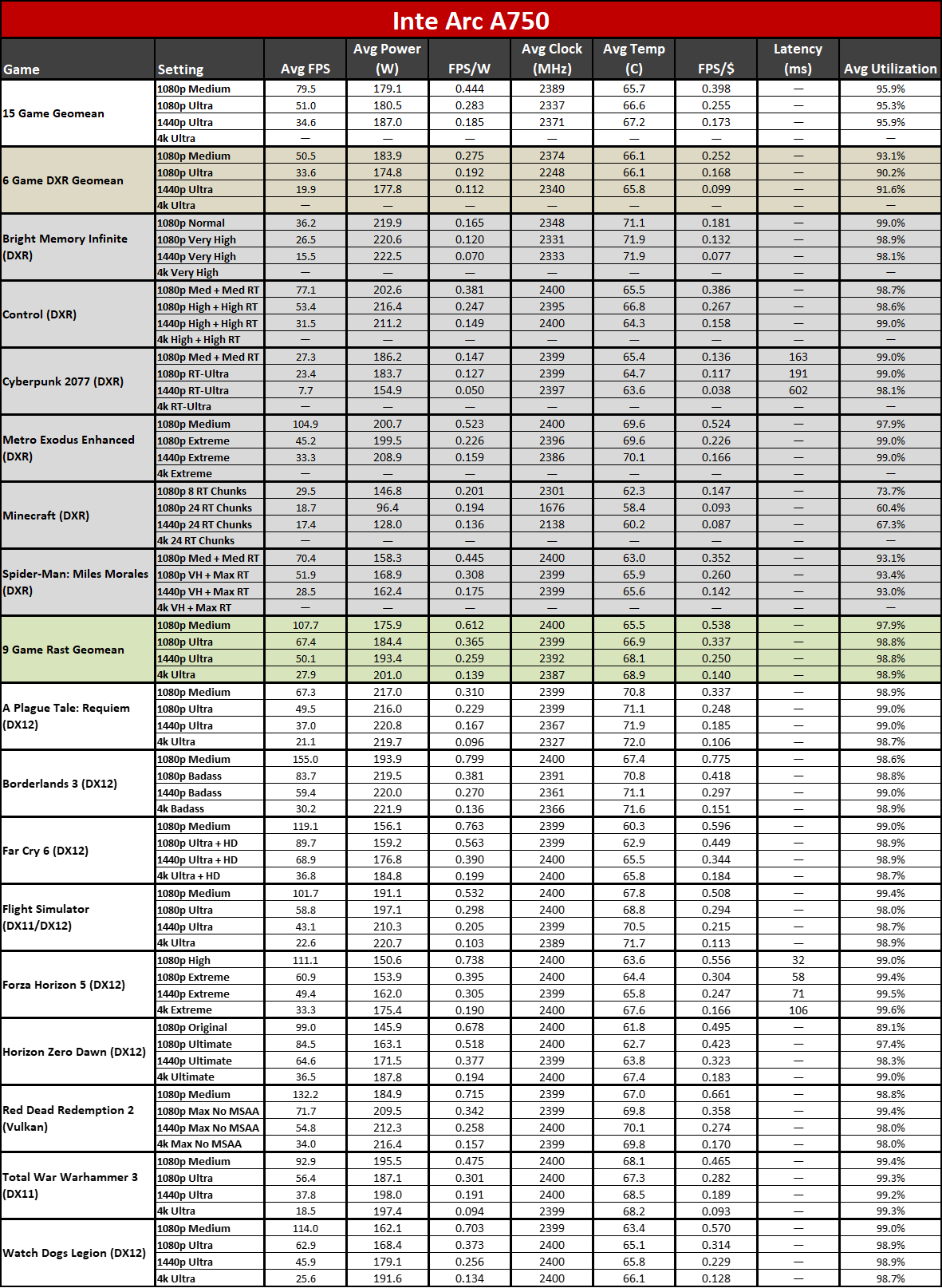
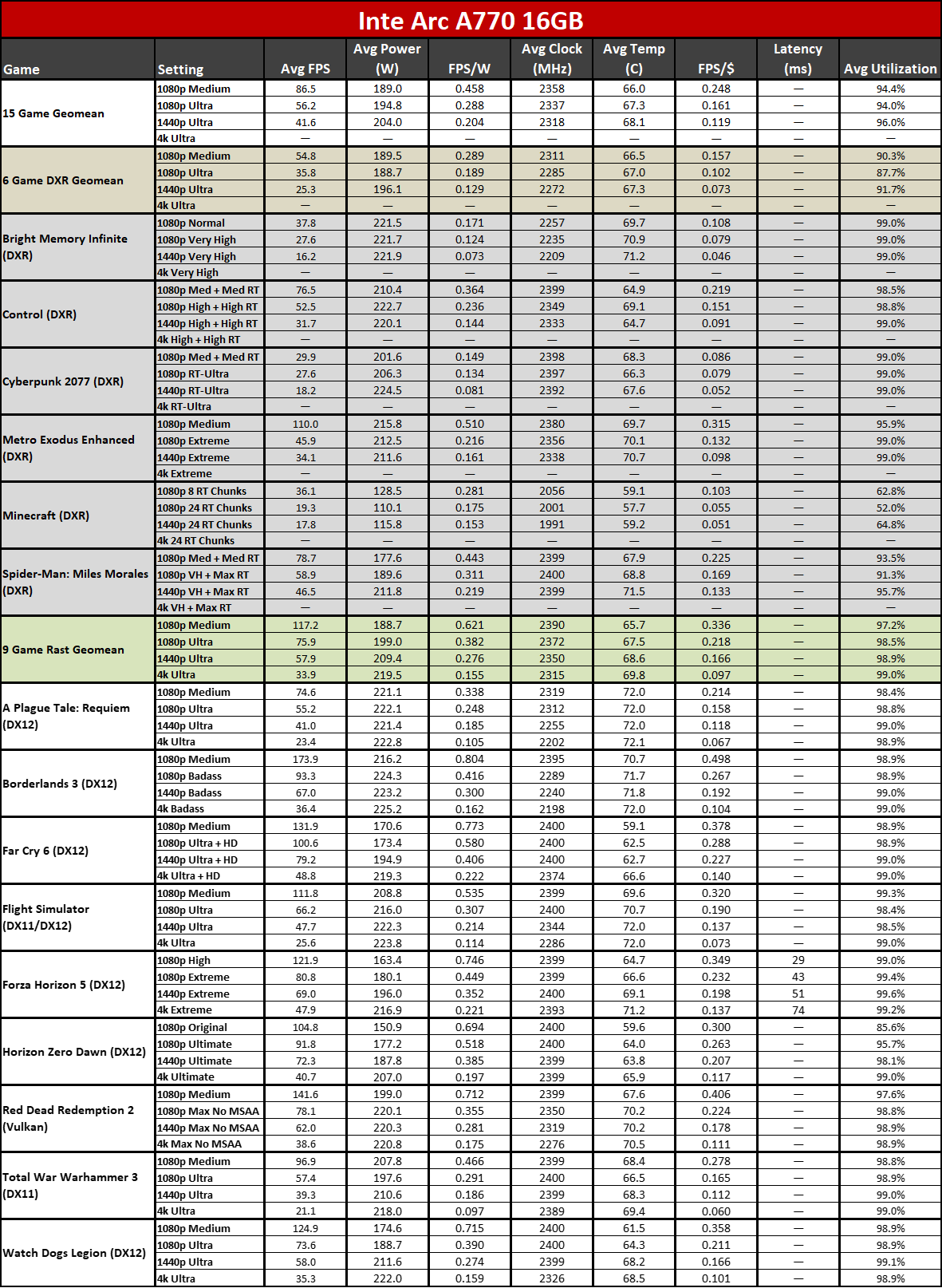
Here's the full rundown of all of our test results, including performance per watt and performance per dollar columns. We won't dig into the details much here, but we used the lowest priced card we could find online for the tables — for a reputable model from a reputable online site. You could find used cards on eBay for a lot less money in some cases, but buying a used graphics card has more associated risks.
The best value right now, if you're not worried about power use, is the Intel Arc A750. Intel dropped the price to $249 a few months back, but now the Arc A750 costs $199 at Newegg. We don't know if that's a permanent price drop (until the cards sell out), or just a temporary sale. Besides that, the RX 6600 comes as the second best value, followed very closely by the RX 6650 XT, RX 6600 XT, and RX 6700 10GB. The RX 7600 ranks sixth overall.
Efficiency is the other item you can see here, represented as FPS/W. Nvidia's RTX 4060 Ti takes top honors, with 0.95 FPS/W at 1080p medium and 0.60 FPS/W at 1080p ultra. Second place goes to the RX 6800 at 0.60 FPS/W for 1080p medium and 0.377 FPS/W at 1080p ultra, and then the RX 7600 comes in third and only slightly behind the 6800 with 0.595 FPS/W and 0.361 FPS/W.
- MORE: Best Graphics Cards
- MORE: GPU Benchmarks and Hierarchy
- MORE: All Graphics Content
Get Tom's Hardware's best news and in-depth reviews, straight to your inbox.
Current page: Radeon RX 7600: Power, Clocks, Temps, and Noise
Prev Page Radeon RX 7600: Professional Content Creation and AI Performance Next Page Radeon RX 7600: Mainstream RDNA 3
Jarred Walton is a senior editor at Tom's Hardware focusing on everything GPU. He has been working as a tech journalist since 2004, writing for AnandTech, Maximum PC, and PC Gamer. From the first S3 Virge '3D decelerators' to today's GPUs, Jarred keeps up with all the latest graphics trends and is the one to ask about game performance.
-
Amdlova As what I expected another pile of crap. One watt better than the old gen. Why spend sand on these... 199 dollar max for this graphics.Reply
@JarredWaltonGPU thanks for the review... hard time to you trying find somenthing good or new on these graphics -
salgado18 AMD should have made a refresh of the RX 6650 XT and earn more money. If nothing really improved, then what's the point?Reply -
btmedic04 Glad to see the last minute price drop, it definitely makes it a much more appealing product. Currently at newegg there are 5 rx 6650xt models available with an average price of $288 minus an average discount of $20. So more or less the same price as the rx 7600 mba. given that information, if I were in the market at that price range, I'd just grab the 7600 given they are more or less the same price once you factor in discounts. It still would've been nice to see a -600 class part match the last generation -700 class part in performance. Maybe we'll see that with a 7600 xtReply -
InvalidError Reply
While it may not make sense for people who already own something from the last generation or two, plenty of people have 5+ years old GPUs or are building new with no half-decent GPU to spare.Amdlova said:As what I expected another pile of crap. One watt better than the old gen. Why spend sand on these... 199 dollar max for this graphics.
I'm still using a GTX1050, waiting for something decent to hit ~$260 CAN. I bought an open-box A750 for $270 a few weeks ago, ended up returning it as seemingly defective since it caused my PC to crash repeatedly. -
Elusive Ruse Reply
People want a brilliant GPU and they wanna pay $250 for it, as if the whole pandemic, parts shortage and a historic inflation went over their head. This might sound like a radical idea, but mid-range starts at $500 now. :LOL:InvalidError said:While it may not make sense for people who already own something from the last generation or two, plenty of people have 5+ years old GPUs or are building new with no half-decent GPU to spare.
I'm still using a GTX1050, waiting for something decent to hit ~$260 CAN. I bought an open-box A750 for $270 a few weeks ago, ended up returning it as seemingly defective since it caused my PC to crash repeatedly. -
atomicWAR Reply
Should it though?Elusive Ruse said:This might sound like a radical idea, but mid-range starts at $500 now. :LOL:
